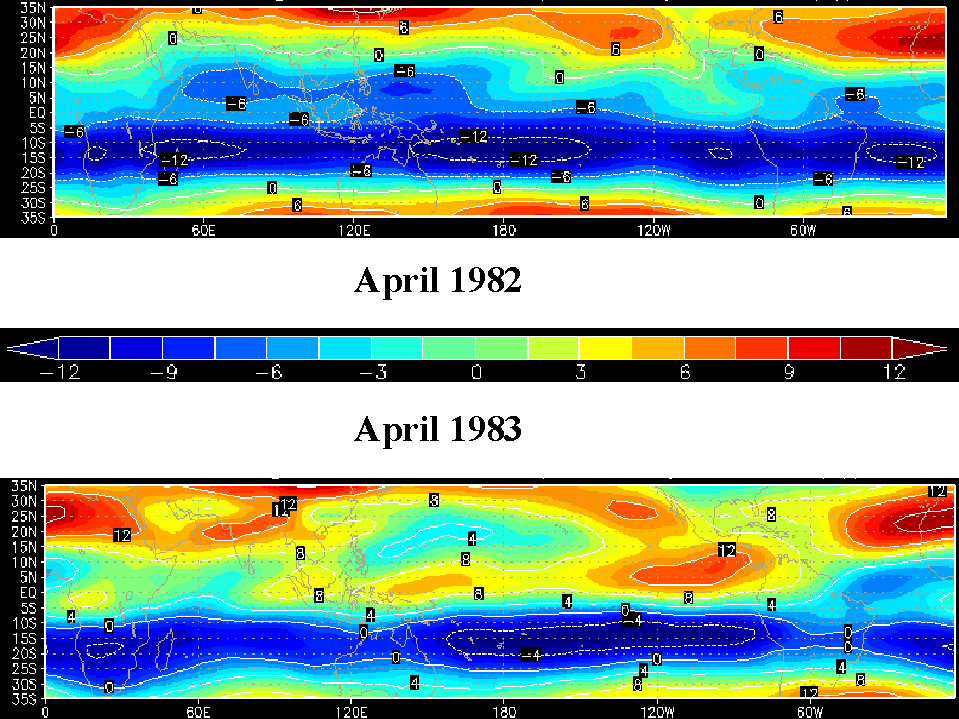
|
E. Linacre and B. Geerts |
9/'98 |
The occurrence of strong easterly winds above the equator is illustrated by the advection of material from the El Chichon volcanic eruption at 93° W, 17° N in Mexico on 3rd of April 1982 (1, 2). At this time the Quasi-Biennial Oscillation (QBO) was in its easterly phase (Fig 1). The eruption produced a plume of a fine mist of sulphuric acid droplets, formed by photochemical reaction of the ejected sulphur with tropospheric moisture. The plume reached a height of 25 km, where it spread westwards to about 125° W by 5th April, to the Philippines at 130° E by 15th, and, dispersing gradually, it reached Mexico from the east by 25th April. This amounted to an average speed of about 20 m/s.

Fig 1. Mean zonal wind speed (in m/s) at 50 hPa (about 24 km) during April 1982 (top) and April 1983 (bottom). Easterly winds (blue) are stronger and more widespread over the tropics during the El Chicon eruption, than one year later. Westerly winds are found year-round at higher latitudes. In April the upper tropospheric/lower stratospheric easterlies are shifted south of the equator, in accordance with the position of the ITCZ. (Data from the global atmospheric reanalysis project by the US ional Center for Environmental Prediction)
The QBO of low-latitude stratospheric winds involves periodic reversal of the wind’s direction close to the equator. It is associated with parallel fluctuations of sea-level pressures and wind directions in New Zealand (3,4). There are also many more associations, e.g. with the latitude of the subtropical high-pressure belt, in the sea-surface temperature of the Tasman Sea (between New Zealand and Australia), and in the rainfall over Australia.
References
(1) Sturman, A.P. and N. Tapper 1996. The Weather and Climate of Australia and New Zealand (Oxford) 476pp.
(2) Rampino, M.R. and S. Self 1984. Atmospheric effects of El Chichon. Scientific American, 250, 34-43.
(3) Trenberth, K.E. 1975. A quasi-biennial standing wave in the southern hemisphere and interrelations with sea-surface temperature. Quart. J. Roy. Meteor. Soc., 101, 55-74.
(4) Trenberth, K.E. 1977. Surface atmospheric tides in New Zealand. New Zeal. J. Sci., 20, 339-56.